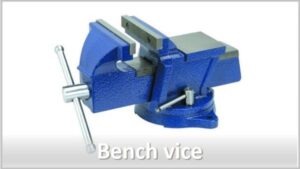Bench bleeding a master cylinder
After removal, repair, or replacement of the main brake cylinder performs bleeding of a brake master cylinder on the workbench. Bench bleeding makes removing air from the hydraulic system easier when the master cylinder is installed in place. Otherwise, the air in the cylinder reaches the hydraulic system directly, preventing pressure from being created and making it difficult to bleeding.
First, the old brake fluid is removed from the tank. Then all brake lines and the nut that connects the master brake cylinder and a vacuum brake booster are removed. The master cylinder pushrod length is measured.
The master brake cylinder is removed and mounted on a vise so that the paws cover the cylinder lugs. Install the bleeder lines into the master cylinder outlet ports with the ends of the lines deep within the master cylinder reservoir. Fill the tank halfway with clean brake fluid.






